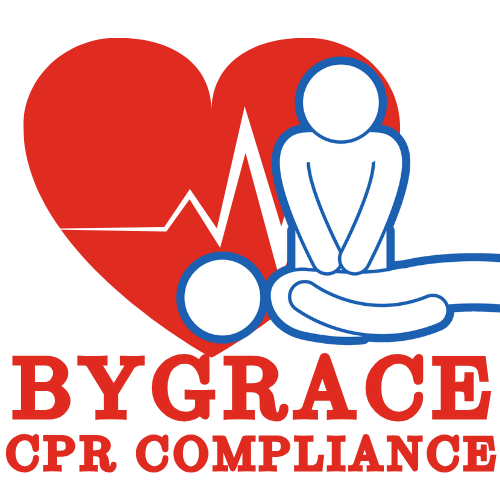
What is PALS?
PALS stands for Pediatric Advanced Life Support, and it’s a course designed to teach healthcare providers how to respond to an emergency involving a pediatric patient.
PALS covers a wide range of topics, including airway management, CPR, defibrillation, and treatment of shock.
The course is designed for healthcare providers who work with pediatric patients, including doctors, nurses, paramedics, and emergency medical technicians (EMTs).
PALS Training and Certification
First, there’s a course that covers the basics of PALS, which is called the PALS Provider Course. This course is typically 16 to 18 hours long, and it includes both didactic (lecture-based) and practical (hands-on) instruction.
The PALS Provider Course covers topics like airway management, CPR, the use of an AED, shock management, and medications. After completing the PALS Provider Course, a provider can then take the PALS Certification Exam.
The PALS Certification Exam is a multiple-choice test that covers the same topics as the PALS Provider Course. It is a written test, and it must be passed in order to obtain a PALS certification.
The certification is valid for two years, and it must be renewed every two years in order to maintain a current PALS certification. To renew the certification, a provider must take the PALS Recertification Course. This course is shorter than the initial PALS Provider Course, and it usually takes around 6 to 8 hours to complete.
The different skills that are taught in a PALS course include airway management, cardiopulmonary resuscitation (CPR), and the use of an automated external defibrillator(AED), This includes assessing the airway, opening the airway, using a bag-valve mask (BVM), and suctioning.
Another important skill is CPR. In the PALS Provider Course, providers learn how to perform CPR on a child, including how to use chest compressions and rescue breaths.
the course covers topics like how to assess and treat a pediatric patient, how to manage shock, and how to prevent further deterioration in a patient’s condition.
There are also special considerations for infants and children with underlying medical conditions.
Benefits of PALS Training to Providers:
Some benefits of PALS for the providers themselves.
- One benefit is that PALS training can help providers to feel more confident and prepared to treat pediatric patients in an emergency.
- PALS training can help to improve communication and teamwork among providers. This is because the course teaches providers how to work together as a team to provide the best care for patients.
- PALS can help to reduce provider burnout. This is because the course teaches providers how to manage stress and deal with difficult situations.
- PALS can help to improve patient satisfaction. This is because patients and their families feel more confident when they know that their providers have been trained in the most up-to-date and evidence-based care.
- PALS can help providers to advance their careers. Many healthcare organizations look for providers who are PALS-certified, so the certification can help to open up new opportunities.
Why is PALS Important?
There are a number of reasons why PALS is so important.
- Pediatric patients have different needs than adults, and they require specialized care in an emergency situation.
- Pediatric patients are more vulnerable to complications from injuries and illnesses, so it’s important for providers to be able to recognize and treat these complications quickly.
- PALS can help to improve outcomes for pediatric patients. Research has shown that patients who receive PALS-certified care have better outcomes than those who do not.
- PALS is important because it helps to standardize care for pediatric patients. The PALS course is taught by the American Heart Association (AHA), which sets the standards for emergency care. This means that all providers who have taken the PALS course have been trained in the same way, and they know how to use the same equipment and follow the same protocols.
- This standardization helps to ensure that all patients receive the same high-quality care, regardless of where they are treated.
What is The PALS Algorithm?
The PALS algorithm is a systematic approach that providers use to care for critically ill pediatric patients. It is based on the Pediatric Advanced Life Support (PALS) Guidelines, which are published by the AHA.
The algorithm is designed to help providers make quick and accurate decisions during an emergency. It provides a step-by-step process for assessing and treating pediatric patients. The algorithm is divided into four main sections
Resuscitation, Stabilization, Treatment and Ongoing Care.
Resuscitation:
The resuscitation section of the PALS algorithm is the first step in caring for a critically ill pediatric patient. It involves four main steps: assessing the patient, activating the emergency response system, providing initial treatment, and managing the airway.
Assessing the patient involves checking for signs of life, such as breathing and a pulse. If the patient is not breathing or has no pulse, providers start CPR immediately.
Activating the emergency response system involves calling for help from other providers, such as EMS. Initial treatment involves starting IV fluids, giving medications, and beginning chest compressions.
Stabilization:
The stabilization section of the PALS algorithm involves several steps to stabilize the patient’s condition. The first step is a complete head-to-toe assessment of the patient. This assessment includes checking the patient’s vital signs, such as heart rate and breathing rate.
The next step is to obtain IV access, which allows providers to give fluids and medications to the patient.
The third step is to treat the patient’s airway, which can include using a bag-valve mask or intubating the patient. After the patient’s airway is managed, providers can proceed to the treatment section of the algorithm.
Treatment:
The treatment section of the PALS algorithm covers the specific treatments that are needed to treat the patient’s condition. These treatments are based on the findings from the initial assessment and the patient’s vital signs.
The most common treatments include administering IV fluids, giving oxygen, and giving medications. In some cases, providers may need to perform procedures such as placing a chest tube or starting a central line.
All of these treatments are aimed at stabilizing the patient’s condition and preparing them for transport to a higher level of care.
Ongoing care.
The ongoing care section of the PALS algorithm covers the care that is needed after the patient’s condition has been stabilized. This includes monitoring the patient’s vital signs, providing pain relief, and communicating with the family. It’s important to continue assessing the patient throughout their stay in the emergency department and to communicate any changes in the patient’s condition to the family.
Providers should prepare the patient for transfer to a higher level of care, such as an ICU or a pediatric hospital.
A General overview of BLS and PALS
- BLS stands for Basic Life Support, and it’s the most basic level of life support. It covers CPR and other basic interventions for patients who are not breathing or do not have a pulse.
- PALS, on the other hand, is a more advanced level of life support that is specifically designed for pediatric patients. It covers more advanced interventions, such as the use of medications and airway management.
Bottom Line
PALS is a course that teaches healthcare providers how to respond to a pediatric emergency. It covers topics like cardiac arrest, respiratory arrest, and shock.
PALS is so important because children’s bodies are different from adults’ bodies, and they require different treatment. For example, a child’s heart rate and breathing rate are different from an adult’s, and their airway is smaller.
Children have different dosages for medications than adults. These are just a few of the many differences that make PALS so crucial.
A few challenges of PALS is the fact that it’s constantly changing. The AHA updates the PALS course every few years, so providers have to stay up-to-date with the latest guidelines and recommendations. This can be time-consuming and challenging for busy providers.
The AHA’s requirements for recertification can be strict. Providers must complete a certain number of hours of continuing education every two years in order to maintain their certification.
The cost of the course for PALS is not cheap, and many providers have to pay for it out of their own pocket.
Another challenge is the time commitment required. The PALS course is usually one or two days long, and it can be difficult for providers to find the time to take the course.
Some providers find the material in the course to be challenging.

0 Comments